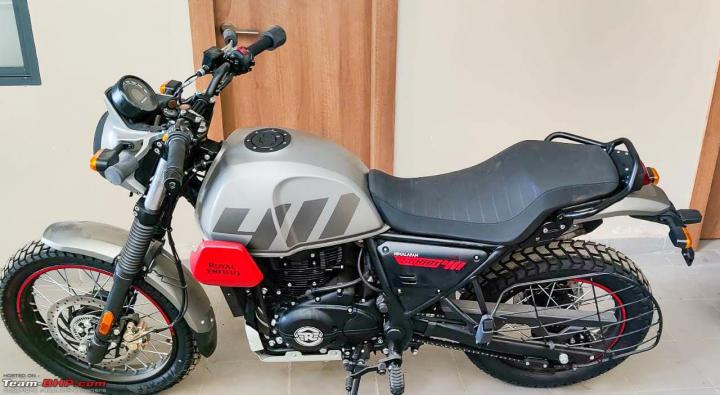News
Royal Enfield Scram 411 vs Himalayan: What are the key differences
I looked through their information brochures and I am surprised to see that there is a significant weight difference of 15 kgs between the two bikes.
BHPian 2wheelsvaga recently shared this with other enthusiasts.
Hi all. I was looking for information on the Scram 411, and I don't see too many in-depth reviews of the bike, hence my post.
I looked through their information brochures and I am surprised to see that there is a significant weight difference of 15 kgs between the Scram (185) and the Himalayan (199). Why is this so?
Combined with its other advantages over the Himalayan (the 19" wheel and a headlight that moves with the handle), I feel it's a better tourer of the two. A test in the mountains was also praising it's better suspension setup. Of course, for really dedicated off-roading the Himalayan is the better of the two.
Given that RE is going to come out with a liquid cooled 450 cc engine, should be expect the overall weight of the Himalayan/Scram to go up even more from the already high 199 kgs (or relatively light 185 kgs)?
Is the new Himalayan/Scram going to have a new frame? From some spy shots that I saw on the internet, it seems that the rear part of the frame is going to be pointing skywards. This means the new model will significantly alter the seating comfort of the pillion.
Thanks!
Here's what BHPian WhiskeyTangoFox had to say on the matter:
The Scram, IMO is better suited for single-person touring. I believe the seating on the Himalayan is slightly better and more plush. Of course, the flickability is better on the scram, but if you want to do two-up touring, you would have significantly more luggage, so for a Tail Bag + Saddle Bags, which is the regular setup for most, you'd end up adding back the rear rack to the bike. A windscreen is more touring-friendly on open roads, and I'd really appreciate a Centre stand on the bike in the event of a puncture. When you add all of these back, it is essentially a Himalayan minus the Jerry Can/Tank Guard frame. Then again, it will still have a small weight advantage over the himmy, but not by much. I think the Scram makes a good urban bike, with weekend trail riding outings, in its stock form.
Majority of the Himalayan's weight gain is in the sub frame reinforcement, which used to crack in the BS3 and BS4 Models. Based on the spy shots, it doesn't seem like the frame is the same, but only time will tell.
BHPian 2wheelsvaga replied:
I dug a little and noticed that there is comfort or touring seat option for the Scram. Whoa, no centre-stand. How did I miss that? I suppose it's not less than 6-7 kgs? So, that's how they've got the weight savings? From the rear rack and the stand. Sheesh.
So, the latest Scram and Himalayan frames are now adequately tested on the road? Do you know if recent buyers reported any issues there?
I should start a separate thread on this, but I am intrigued by the weight gain of all the REs over the years. If Honda can keep the CB 350 to a decent 181 kgs, then why not RE?
BHPian WhikeyTangoFox replied:
True, but a split seat is a lot less slidey if you know what I mean.
I surely hope so XD. In this day and age, the slightest problem with anything instantly pops up on Youtube or Instagram, and I'm yet to see any chassis issue with the BS6 Models (touchwood). The square tubular frame in itself has a lot of disadvantages, which Ryan from F9 Mentioned in this video.
Here's what BHPian Shibhitsaxena had to say on the matter:
Side stand is one of the key difference and practically speaking, you will have to get that on the Scram considering the spokes. IMO, RE missed a trick by not offering alloys on Scram. It would have been a truly differentiated offering for road-biased riders like me.
I finally bought a Himalayan over Scram after I waited for latter's launch. After realising weight difference isn't much in practicality, I decided based on test drive, where I found the split seat to be considerably better on Himalayan.
Check out BHPian comments for more insights and information.







_0.png)











